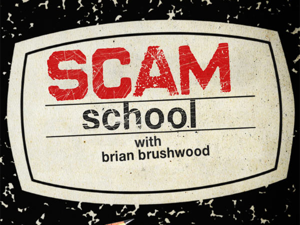 Back in March, Scam School taught a card memory feat in which you apparently memorize the order of a deck of cards so well, you can identify a single moved card.
Back in March, Scam School taught a card memory feat in which you apparently memorize the order of a deck of cards so well, you can identify a single moved card.
This past week, Scam School presented another card memory feat of a slightly different nature. I thought it might be fun to compare this simulated feat to the legitimate memory feat.
We'll start with the simulated version. Imagine being able to look through a deck of cards once, and then recall the missing card from the stack from memory alone.
That's what is taught in the 166th episode of Scam School:
Let's take a closer look at the method. There's an expectation that you're going to identify two cards removed from the deck, but you're really only identifying one.
Note that, with this method, you can really only identify a single card. For example, if you run through the deck and get a sum of 211 (or rather, 1), you know that the two face-down cards must total 9. Until you look, however, you can't really be sure whether the two cards are an 8 and a 1, a 7 and a 2, a 6 and a 3, or a 5 and a 4. Further, the math can't tell you which is which, and obviously can't tell you the suit.
Fortunately, the routine is set up to cover these problems in the course of the presentation. Being able to identify a single card after just a single (apparent) glance through the deck is an impressive. The fact that this method is simple and straightforward after sufficient practice is a nice bonus.
One big difference between this and the previous card memory feat taught on Scam School is that this one is not about memorizing the order. The focus is simply on memorizing which cards are in the deck, and using that information to determine the missing cards.
How does this compare to performing the same feat by legitimate memorization? Over in the Mental Gym, I teach a similar card memory feat using legitimate memorization. It does take some preparation, but the work isn't as complex as you might think.
You start by learning Bob Farmer's easy card mnemonics, and then you learn a feat where you memorize the cards in pairs. I've even developed a helpful quiz page to help you all along the way.
Before you even practice the feat, there is more work put into it than in the simulated memory feat above. However, this early work pays off in making the live work more effective, as you'll see.
As you link the cards to each other, the memorable images you create are developed and then dropped from your mind. If they're weird and creative enough, they'll come back to you with little effort. With enough practice in this legitimate memory version, recalling a single removed card won't be a problem. All you have to do is recall cards not linked to another card.
The process of discovering a missing card, however, requires that you mentally walk through each card's image (say, first all the clubs in order, then all the hearts in order, and so on) one by one to determine which one isn't linked to anything. You can even walk through this list verbally, as long as you make this interesting for your audience: “What about the Ace, 2 and 3 of clubs? I remember all those, as I do the 4...”
Even this way, it might be uninteresting to an audience. Fortunately, the legitimate memory version offers a very important feature that the simulated version can't - you can determined more than one card! You could very well recall 2 or more missing cards.
Funnily enough, since the more cards are removed, the more often you'll recognize missing cards, the legitimate memory version actually offers the added bonus of actually becoming easier and more interesting to present as more cards are removed!
You could, for example, have four 13-card bridge hands dealt out, memorize three of the hands, and recall what is in the fourth. Back in February 2009, I published Michael Frink's blackjack presentation for the card pairs in which you memorize 15 pairs of cards (30 cards total), and finish by recalling the remaining 20 cards!
So, does this mean that the legitimate memory version is better? That is actually up to you. If you're looking for a good occasional feat at the bar that you can not practice for a while, but call on when you need it, the simulated version might be the best way to go. If you're looking for a more authentic version, and you're willing to keep in practice, the legitimate version might be the way to go.
The best thing to do, either way, is to learn them both, so you know which one suits your needs better. I'd love to hear about any stories you have performing either one of these!
0
Card Memory: Fake vs. Real
Published on Sunday, May 22, 2011 in fun, math, memory, memory feats, playing cards, Scam School, site features, videos
Related Posts
Post Details
Posted by Pi Guy on May 22, 2011
Labels:
fun,
math,
memory,
memory feats,
playing cards,
Scam School,
site features,
videos
Subscribe to:
Post Comments (Atom)




No Response to "Card Memory: Fake vs. Real"
Post a Comment